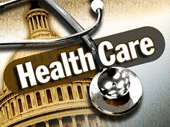Despite the recent opening of State insurance exchanges under the Patient Protection and Affordable Care Act (often called “ObamaCare”), many people are still uncertain about exactly what the law requires and how it impacts them. The Act is extensive and there is far more information available than can be shared in this short article, but here are some of the most basic things that you need to know;
Nuts and bolts:
- The Act is designed to extend health insurance coverage to include the 15% of Americans who currently do not carry insurance by: (1) requiring that everyone purchase health care insurance (you may have heard this referred to as “the individual mandate”); (2) creating state-run health exchanges through which that insurance may be purchased; and (3) expanding state Medicaid eligibility to include more people.
- The Act is expected to cost over one trillion dollars – that’s $1,000,000,000,000 – in the next decade, but is also expected to cut the deficit by about the same amount in its second decade if all of its provisions stay in place. It is largely funded by: (1) cuts in Medicare reimbursements to doctors, as well as other health professionals and facilities, who provide services to Medicare patients (in other words, the government is going to pay them less for those services); (2) new taxes on the health care industry; and (3) new taxes on investment income for those earning more than $200,000.
Individuals:
- If you are already covered by an employer’s health plan, the Act won’t affect you much right now.
- For those not covered by employer insurance plans, you must sign up for coverage, through the newly created state health exchanges for the 2014 calendar year. The enrollment process changes from state to state, but www.healthcare.gov is a good place to start. If you want coverage to start on January 1, 2014, you must enroll by December 15, 2013, but the exchanges are open for enrollment through March 31, 2014. After that, you will have to pay the 2014 penalty of $95 to the IRS and wait until next year. The penalty for not enrolling in health insurance coverage will increase each year until it reaches its maximum of $695 or 2.5% of your income per year, whichever is greater. But if you can’t find a plan that costs you less than 8% of your annual income, you are exempt from purchasing insurance and won’t have to pay the penalty.
- There are four basic levels of coverage offered to individuals through the state-run exchanges: Bronze (60% of costs covered), Silver (70%), Gold (80%) and Platinum (90%). (There is also a “Catastrophic” plan which is available only to individuals under 30 years old and provides for lower premiums and higher deductibles.) Premiums for the plans vary widely from state to state. Michigan currently ranks 35th lowest for the Bronze plan and 38th lowest for the Silver plan.
- If you don’t sign up for coverage and don’t pay the penalty, the IRS can deduct the penalty from your tax refund or put the tab on your next year’s tax return, but they can’t lien your house or send agents to come get you.
- Individuals under 26 years of age can be covered under their parents’ health insurance plan.
-
- If your annual income is between 138% and 400% of the federal poverty level (roughly $25,000-$88,000), you are eligible to be covered by the newly expanded state Medicaid plans, and may be given tax credits on a sliding scale to offset premium payments. Premiums are capped for these individuals and families, also on a sliding scale based upon income.
- If you have a pre-existing condition, you cannot be denied coverage because of it. Coverage can, however, be denied based upon age, premium rating area, family composition or tobacco use.
Businesses:
- Businesses with less than 50 employees are exempt from the Act altogether, but may be eligible for tax credits if they choose to enroll.
- Businesses with more than 50 but less than 200 employees are not required to enroll in a plan until 2015, but may be eligible for tax credits for enrolling earlier.
- Businesses with more than 200 employees must automatically enroll employees in health insurance plans, but employees may opt out.
- Twenty-four states have opened Small Business Health Option Programs (SHOPs) allowing small business owners (those with less than 100 employees) to enroll in plans beginning October 1, 2013. Though not required to enroll yet, all small businesses must notify their employees that the state-run exchanges are open for enrollment. The United States Department of Labor model notices for employers can be found at:http://www.dol.gov/ebsa/pdf/FLSAwithplans.pdf OR http://www.dol.gov/ebsa/pdf/FLSAwithoutplans.pdf (The first is for employers currently offering health insurance plans, and the second is for employers not currently offering health insurance plans.)
- Beginning in 2018, there will be a 30% tax on employer contributions toward health insurance premiums which exceed $10,200 per individual or $27,500 per family under an employer provided health plan. In light of this, employers should be mindful of the plan choices they make now.
The Patient Protection and Affordable Care Act includes extensive taxation provisions which are far beyond the scope of this short article. For a more extensive summary of the Act, visit:http://kaiserfamilyfoundation.files.wordpress.com/2011/04/8061-021.pdf.


